Chiar dacă pare o specie mai puțin importantă, proprietățile lemnului de salcâm îl situează alături de specii mult mai apreciate precum the paltin and nuc. Folosirea sa în mică măsură la obținerea mobilierului de interior l-a făcut mai puțin cunoscut și de aici tratarea lui ca o specie inferioară. Salcâmul este însă una dintre cele mai rezistente specii la umiditate și putrezire, fiind cotat imediat sub lemnul de tec. Deși este cunoscut mai mult ca lemn de construcții, pentru structuri de rezistență, salcâmul are textură și culori deosebite fiind folosit frecvent la obținerea mobilierului de grădină, a deck-urilor sau parchetului. Despre salcâm și lemnul lui rezistent, dur și elastic, aflați în cele ce urmează.
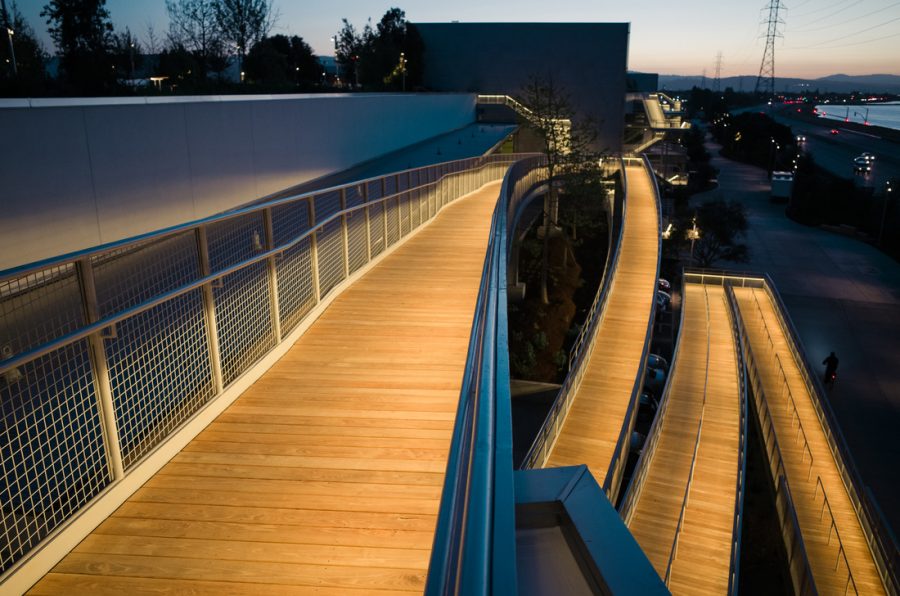
photo source: blacklocustlumber.com
Amintiri legate de lemnul de salcâm
Prima dată când am lucrat cu lemnul de salcâm a fost înainte de revoluție, pe când eram la ICPIL (Institutul de Cercetare și Proiectare pentru Industria Lemnului). Salcâmul nu era o noutate pentru mine, pentru că bunica mea avea la țară, pe lângă gard, salcâmi pentru care intra de multe ori în conflict cu vecinii. Ei ar fi vrut să-i taie pentru că făceau umbră și încetineau culturile, bunica nu voia pentru că era lemn bun pentru structură de rezistență și-i ținea pentru o eventuală construcție. Pe lângă această idee că se pot folosi în construcții, mai aveam în minte mirosul lor când înfloreau, țepii ,ari și ascuțiți și cam atât.
La institut l-am descoperit însă din alt punct de vedere. Tema la care lucram trebuia să aducă specii noi în producerea mobilei. Salcâmul era una dintre ele. Așa am ajuns să văd cum arată masivul și furnirul de salcâm și am rămas impresionată de câte culori poți descoperi într-un singur lemn. Pe aceeași bucată puteai găsi nuanțe de galben verzui, verde, maro și chiar mov. Era o adevărată încântare să-l privești.
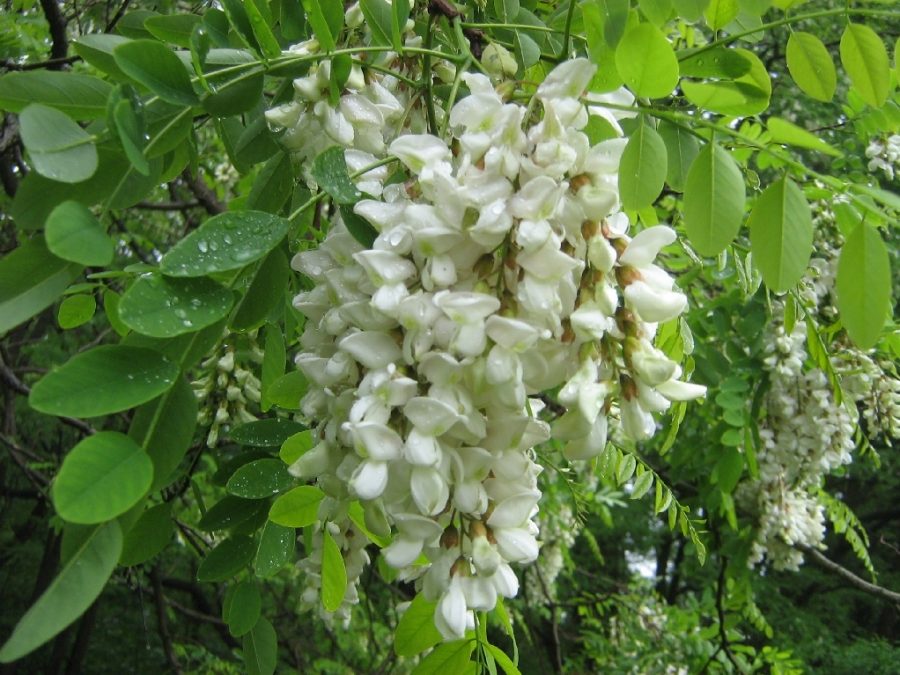
photo source: commons.wikimedia.org
Un arbore rezistent, cu creștere rapidă
Salcâmul (Robinia pseudoacacia) este originar din America de Nord. În secolul al XVII-lea a fost adus în Europa, iar 200 de ani mai târziu se făceau primele culturi de salcâm in Oltenia. Acum îl găsim mai ales la șes, în zonele nisipoase. Crește mai repede ca alte specii și rezistă bine la secetă, fiind considerată de multe ori specie invazivă. Il găsiți ca black locust în literatura de specialitate în limba engleză și acacia în cea franceză, italiană și spaniolă. Mai găsiți uneori robinio (italiană) sau robinier (franceză). În germană este akazie, robinie sau akazieholz (lemn de salcâm).
Rădăcinile salcâmului se întind foarte mult pe orizontală ajungând la distanțe mari. Trunchiul crește drept, cu coroana îngustă și poate ajunge la înălțimi de 20-30 m și diametrul trunchiului între 0,6 și 1,2 m. Scoarța este neagră cu diferite irizări și are crăpături adânci de-a lungul trunchiului care se încrucișează cu apariția unor forme de diamant. Ramurile sunt așezate în zig-zag și sunt acoperite la tinerețe cu un puf alb argintiu care dispare în timp. Copacii tineri au spini care devin tot mai puțini pe măsură ce arborele se maturizează. Frunzele sunt verzi-albăstrui închis și sunt așezate grupate între 9 și 19, alternativ, pe ramură. Florile apar la începutul lui mai, sunt alb-crem de obicei, așezate în ciorchini de 10-20 cm și au un parfum puternic, foarte plăcut. Fructul este o păstaie netedă de 5-10 cm lungime și 1-1,5 lățime.
Salcâmul crește repede și este foarte rezistent la condiții nefavorabile. În trecut era deseori plantat pe hotarul dintre loturi, fiind util iarna ca parazăpezi, dar și pentru a fixa solul și a împiedica deșertificarea. Salcâmul trăiește în jur de 100 de ani, dar speciile singulare, din parcuri sau grădini, pot ajunge și la 200 de ani.
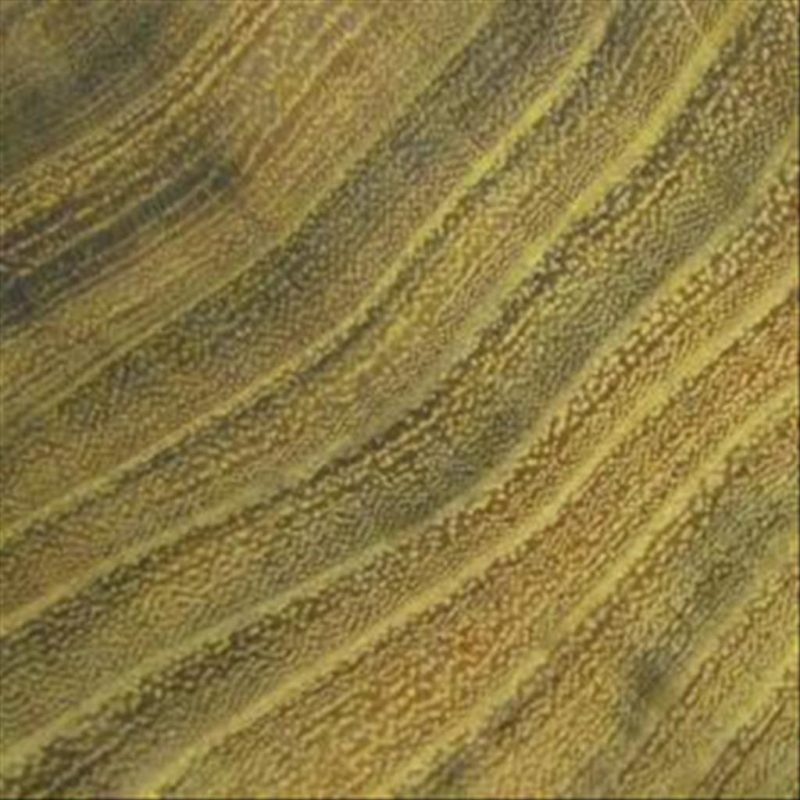
photo source: turningblanks.net
Lemnul de salcâm – caracteristici și proprietăți
În secțiune transversală prin trunchi este foarte vizibilă delimitarea dintre alburn și duramen. Culoarea alburnului este alb-gălbui, iar cea a duramenului poate varia de la galben-verzui pal la brun închis. Culoarea este cu atât mai închisă cu cât arborele este mai matur. Inele anuale sunt clar vizibile.
Fibra este în general dreaptă și textura medie. spre grosieră. Porii sunt rotunzi, mai mari și așezați în grupuri de 2-3 în lemnul timpuriu și mai mici și așezați sub formă de ciorchini sau benzi în lemnul târziu. Porii conțin tile din abundență. Razele medulare sunt înguste spre medii, distanțate normal, lemnul nu prezintă oglinzi. În secțiune tangențială seamănă mult cu lemnul de stejar, având însă culori diferite.
Lemnul de salcâm este rezistent și flexibil, cu structură densă. Densitatea (în stare anhidră) este de 770 kg/m³, iar duritatea Janka 7560 N. Prezența tilelor în vase în număr mare face ca uscarea să fie foarte lentă, dar influențează în mod decisiv rezistența salcâmului la umiditate și putrezire. Salcâmul este foarte rezistent la exterior, fiind poziționat imediat sub lemnul de tec (clasa de rezistență 1-2). Densitatea mare și duritatea face ca prelucrarea să fie mai dificilă, rupând uneori sculele. Se strunjește bine și poate fi modelat la abur. Se încleiează fără probleme.
Are conținut mare de coloranți și tanini solubili în apă care pot duce la probleme la finisare, mai ales dacă produsele sunt hidrodiluabile. Apa scoate coloranții și taninul și schimbă culoarea baițurilor și a vopselelor. Din cauza absorbției reduse poate da uneori probleme de aderență.
Salcâmul are putere calorifică foarte mare, fiind comparabilă cu cea a antracitului. Arde cu flacără mică, încet, la fel cum ard cărbunii. Arde și degajă căldură și dacă este verde (neuscat).
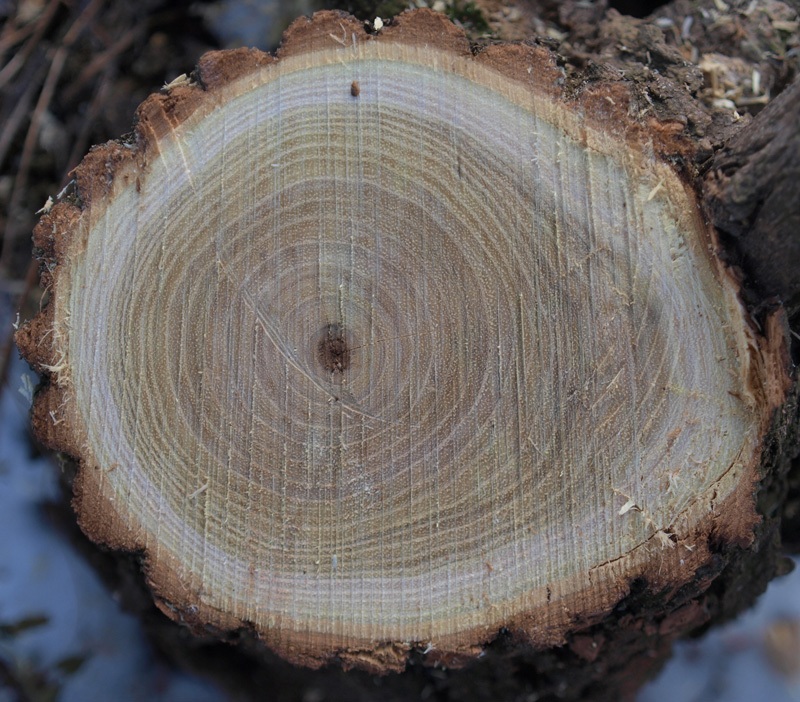
photo source: fld.czu.cz
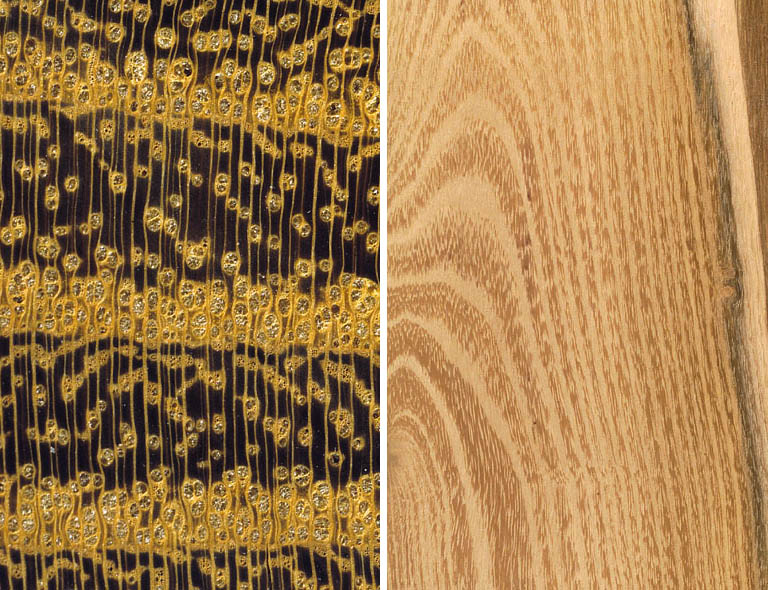
Un lemn cu multiple utilizări
Duritatea, densitatea mare, rezistența și elasticitatea face salcâmul un foarte bun material de construcții. Poate fi folosit în structurile de rezistență și imediat după tăiere, uscarea fiind lentă și fără repercusiuni asupra rezistenței construcției. Rezistența bună la umiditate și putrezire face din salcâm un material potrivit pentru amenajări exterioare, deckuri, garduri, parchet. Tot rezistența foarte bună la putrezire îl face potrivit pentru tutori (araci) folosiți la pomii fructiferi și vița de vie.
Este una dintre speciile preferate pentru obținerea mobilierului de grădină. Finisarea se face în special cu oils rezistente la exterior. Folosirea lacurilor nu este o bună alegere din cauza absorbției reduce ce duce la scăderea aderenței.
La fabricarea mobilierului pentru interior este folosit rar și doar de meșteri pasionați, nu în industria de serie. Se folosește în special ca masiv, debitarea în furnire fiind foarte dificilă. Sunt date care spun că randamentul la obținerea furnirelor este de 10%. Pentru prelucrare are nevoie de scule foarte ascuțite și foarte mare atenție la finisare.
Salcâmul se folosește și la obținerea butoaielor. Trebuie însă avut mare grijă cu licorile puse în interior, pentru că la început eliberează mult tanin. O băutură lăsată în interior multă vreme riscă să iasă cu o culoare violet sau verde închis.
Cu o putere calorifică foarte mare, salcâmul este un foarte bun lemn de foc. Nu este însă recomandat pentru șemineuri deschise pentru că în timpul arderii crapă și aruncă tăciuni aprinși la distanțe mari.
Pe lângă utilizările lemnului, salcâmul este important pentru stabilizarea unor soluri și pentru împăduriri rapide. De asemenea, florile de salcâm sunt o sursă importantă de nectar pentru albine, mierea de salcâm fiind foarte apreciată. Din florile de salcâm se face și un sirop cu multiple beneficii pentru sănătate. Este folosit pentru calmarea tusei si a durerilor în gat, având proprietăți antiinflamatoare, antimicrobiene și antitusive. Florile de salcâm se folosesc și în bucătărie la pregătirea clătitelor și a diverselor prăjituri și la obținerea dulceții de salcâm.

photo source: sectlandscaping.com
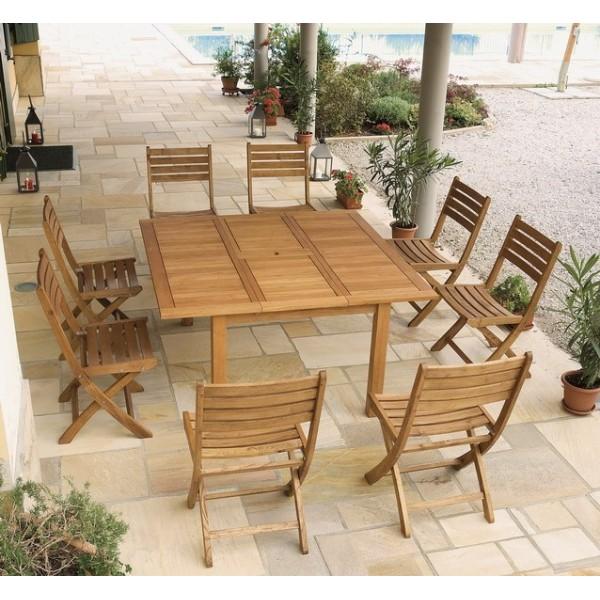
photo source: rimini.subito-italia.eu
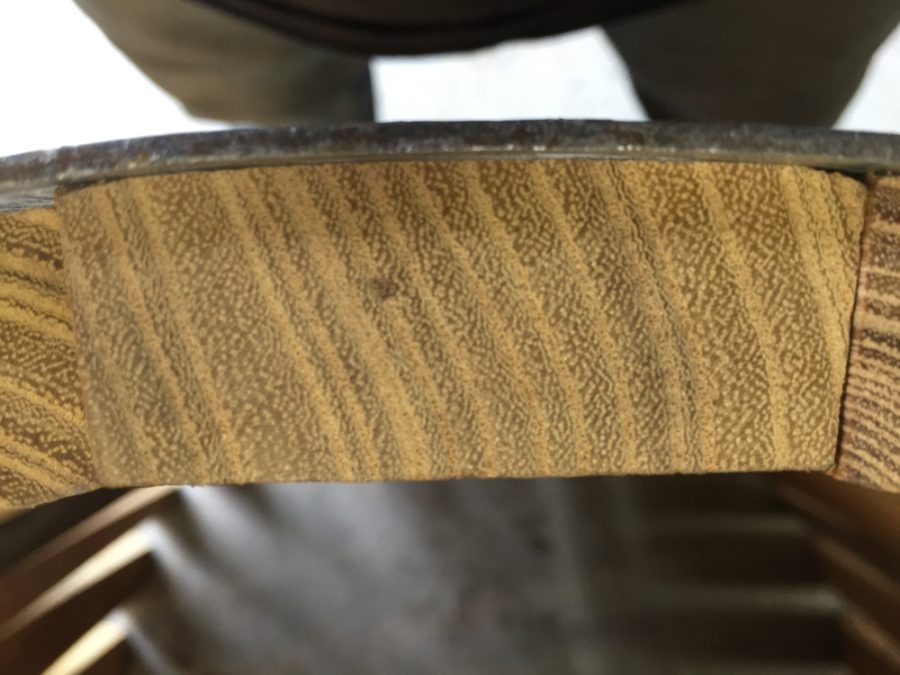
photo source: ecwbny.com
I hope you find the above information useful. As usual, additions are welcome. And if you have any questions or queries, please leave them in the space below. I'm sure I'll reply.

























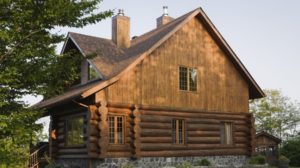
Mrs. Mihaela Radu, I have a question: in the book of Exodus (the Bible) in chap. 26, verses 15 and 16, it says about some acacia planks from which the Tabernacle was made. The dimensions of the planks are given as 10 cubits (5 m) - length and 1.5 cubits (0.75 m) - width... and I am thinking how big that species of acacia (sitim - Ebr.) could have been. Any ideas? I am an architect and need this information for a study. Thank you in advance.
Hello. As far as I know, the salcam is a species that originated in America, so the one mentioned in the Bible should be another species, not Robinia pseudoacacia. However, if it were a salcam, it would not be difficult to obtain such planks because the salcam can reach over 50 m tall, with a diameter of more than 1.5 m, and its trunk is straight. An exact calculation could be made by a wood engineer. I am only a chemical engineer passionate about wood and wood finishing and I do not want to give you wrong information. 🙂
All the best.
Probably the wood mentioned in the Bible is Acacia alba (Faidherbia alba), being del mar widespread in the Sinai peninsula. An interesting article in this regard https://rabbielimallon.wordpress.com/2013/02/10/2-10-13-acacia-wood-1-pshat/
Thank you very much for the article, I love the Salcam is the tree of my heart and I love it very much, the wood what to talk about, I work with it and it gives me Joy :).For five years, in my daily life, I make pancakes from flowers plants and seeds, for bath, it's my passion and activity and I always wondered about making pancakes for bath from tree bark, but information or studies about the properties of tree bark are not too much found, do you have knowledge or access to information about this? Thank you.
I managed to make a gazebo out of acacia wood, I want to tell you that I "dismantled" a hayloft/porumbar that was built since 1949 outside in the yard, covered with broken tiles. The poles of thickness between 120mm 140mm I used for the bottom structure of the gazebo and not only.
What I want to tell you is that those poles were buried in the ground 600mm respectively 60 cm, I took them out whole with difficulty, I cleaned the parts that were in the ground and I was surprised to find that they still had about 6cm of good wood.I insisted on cleaning and peeling the salcam, and after peeling in some parts that had been exposed to moisture for decades I discovered something extraordinary, it was eaten by decay, namely some white worms that left traces / grooves throughout their thickness.
I didn't give up and carefully cleaned every single particle of that wood, I really want to send you (or post here but I don't know how) some pictures of unique pieces of acacia, you have to see the pictures to realize what I'm talking about.
I want to mention that all the joints have been cherted, pre-drilled with 3mm metal burs and then with exigency, patience and accuracy we have hammered nails through those holes.
I'd be glad if you'd like me to send you pictures to see the approximately 67 year old wood I've managed to extend its life.
Please do send them. You can do it on my email address, mihaela.radu@cesbrands.ro, or post on the magazine's Facebook page (Wood Magazine). You can't imagine how much I enjoy the enthusiasm that radiates from your text and the fact that I can discuss with people who have the same passion as me. Thank you and I will contact you after I receive the photos to share my impressions.
Thank you very much, I will send you the promised pictures today!
Thanks for the photos. You've done some work, but it looks great. Congratulations! I too am waiting for you to finish it and send me photos. I'd love, when it's done, to do an article on the transition of the salcam from the old "life" of a dovecote to the new, gazebo life. Do you also have photos of the dovecote (I really like that term. My grandmother was from near Urziceni and she used to say so. I haven't heard it for a long time)? I think it would make a great article. 🙂
Good luck for the future!
All the best.
I also have pictures of the old porumbar, they used to keep there wood, corn, cane (because in the garden there is a huge "nest" of cane planted intentionally to use the leaves for wine barrels), under this sopron/storage/porumbar there is also a bread oven, which I will restore and move it to the new location.
About the gazebo, I hope to finish it as soon as possible (at least the covering that will be once with the scandura given with linseed oil and over bituminous shingles).
I have been looking to make the covering out of cane, papura or dranita (shingles) but finding two sources I came to the conclusion that the price for cane of 50E/sqm is too much.
I'm still deciding how to make the shingles, it would look nice and rustic with shingles but I need time to make the thousands of pieces that need to cover about 25sqm (the area of the patio).
Anyway I'll keep you updated, thank you very much for the article proposal, I'd be delighted to describe what I like to do.
Have a nice day!
-p.s. -I'm going to make a smoker from an old 400L oak barrel that is no longer functional, the project with everything needed is on paper, I just need a little time, but I'll keep you posted.
Now I noticed that I wrote oak barrel...it's a barrel made of salcam wood, it's 50 years old at least.I have several barrels of this kind but the disused one I'm going to transform it, it's already been well cleaned with a wire brush, oil in two hands, then the rosewood lard, it came out very dark, the inside is burnt (from the origin), I'm ready to make another lid and everything I need for the smoker, you'll see !
I'm not saying anything else, I'm just impatient!
I'm caught up in your enthusiasm and can't wait for you to complete the gazebo so I can write about it. I'm suscribing and waiting to hear about the smokers. All the best!
Sarumana, thank you!
Sarumana, this Sunday, June 4, we finished the gazebo.
I am sending you pictures, I have written down all the details, exactly how I did it including how many screws, shingle nails, etc went in, prices and everything!
Can't wait to hear from you!
Interesting article, we know that acacia wood is very hard and would hold up well outside, interesting would be to find out how it behaves over time when standing outside under the action of the weather factors. Does it warp, does it twist, how dimensionally stable is it, does it crack? I'm interested in this because I'd like to "pave" my backyard walkways with acacia cabinetry and I've heard opinions against using acacia in such work on the grounds that it would twist/twist. Thanks
Indeed, it can warp and crack. When the humidity outside is very low (winter in very cold periods, when the moisture in the air freezes and falls to the ground - chickweed), the moisture in the wood tends to come out. Because it is very hard, tensions are high and then cracks are high, or warping occurs. It depends on how you want to pave your yard. If you lay long cabinets, then the probability of cracking is higher. If you use thinner and shorter pieces of wood, then you get rid of the warping problem and the cracks will be small (if any).
All the best.
Thanks for the reply, the pieces will be somewhere around 1.3 m long, so not very long. I understand from you that it would be better to go plank and not cabinet. As a treatment did you recommend anything specific?
Thank you,
All the best
I think the best solution for salami used directly on the ground is oil finishing. Linseed oil is one option. It should be applied in several coats so that the wood absorbs as much as possible. That way it will be better protected against moisture. Good luck!
Okay, thanks for the advice. They won't come directly on the ground, the walkways are cement, and the planks will come mechanically fastened (stainless steel screw+diblu) to them. Between the planks and cement I want to put some plastic spacers of 2-3 mm. And between the planks I would like to leave a 2-3 mm gap.
regarding the behaviour of the decking: for many years I have been promoting this Romanian product
we have done all types of cladding: decking, decking on plastic bases (PE). siding
we found the following:
dry wood:
-long planks 1500-2000 mm long are curved 10-20 mm, "yatagan" effect
percentage cam 20%
-if the screws are cheap and corrode in 4 years break them
-20x60x800 mm sheets clamped on 400×400 mm plastic bases curves about 5%
20x60x400 none curved
so: if you like long boards (and it is normal to like them) don't save on screws
mounted with decking nails that do not rust
green wood: it moves all over the place, if you don't want it to crack, seal the ends with wax or paint
don't get discouraged: order a few more boards and replace what bends
it's well worth it
mounting on the ground: in the technical manual it says that it lasts 45 years in contact with the ground
I burn the underside with a gas lamp;
who knows maybe they live 100 years 🙂
As much as I love salcam (because of the colour and texture, which I think is quite spectacular when polished - I don't know why anyone would put anything but a little oil on salcam), it's not the hardest of the local woods. It's perhaps the hardest native wood that's available in larger quantities, and that lends itself to bigger things, like furniture, gazebos or patio flooring. A much harder wood (if dried properly) is hornwood. That unfortunately is extremely hard to find, and is usually used for small things - typically hammer or axe handles.
Good evening,
All well and good, but where could I find small quantities of salcam scales in Bucharest?
I could even use some scraps from flooring/flooring or similar, at least some knife handles to make.
Thank you
Interesting article, thank you. Thanks also to those who leave comments with more tips and ideas. I wish you all good health.
Very interesting all the articles published ! You "see" the love for wood turned discussions ! Congratulations ! Although I'm not a woodworker either, every time I get home I like to chew something because I like it ! There's something special about wood... you can't compare it to anything else ! Wood has a special nobility, closer to the human soul, regardless of species, regardless of age.
And one more thing! I don't think there is such a thing as "bad wood"! There are only people with ideas and a love for beautiful and lasting things!
Once again, esteem and consideration!
Thanks for your appreciation.
Congratulations and thanks for this article Ms Mihaela, article that highlights the value of acacia wood. In addition to the valuable things you mentioned, if I may, I just want to mention two more points:
- successfully exploits poorly productive land;
- is the most honey-bearing tree in Romania
Thank you, both for your appreciation and for the additions.
All the best!
Well-dried acacia wood is also used to make the pipes, as acacia wood provides one of the most pleasant musical timbres.
Good evening!
Thanks for the information. I didn't know.
All the best!
Can acacia wood be used for windows and doors?
How does it behave when it is combined and layered?
Hello!
Acacia is a heavy wood and a door made of acacia would be very heavy. It can be used, but with care. When it is laminated it is very stable and there are no problems with variations in humidity. Laminated salcam wood is used to make double glazed windows.
Laminated acacia wood flooring is one of the safest flooring choices.
Although it is a very hard and tannin-rich wood, salami does not have big problems with tension in the grain, twisting or other deformations. Problems occur during processing (it is hard and can "chip" tools) and finishing (tannins change colours and reduce varnish adhesion).
All the best!
Don't forget to subscribe to the printed Wood Magazine! For only 58 lei/year you can find out news in the field, discover craft ideas or trade secrets. We remind you that the content in the printed magazine is different from the one on the website. Details in the link below.
Thank you!
https://revistadinlemn.ro/product/abonament-revista-din-lemn/
Hello, I know it is not about this application, the subject. But I want to purchase books about wood and its processing, can you help me. Thank you in advance
I've been trying for 4 days to find continuous-plank acacia wood panels for kitchen furniture. No chance.
It seems that as popular as it is, it is rare to find it processed - the joke...
In Germany it is used more often, in our country...pal domle pal, there is no demand for local wood.